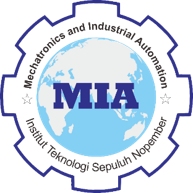Performance Changes in Mass and Compressive Strength of High-Calcium Fly Ash Based Geopolymer Concrete Due to Sodium Sulphate Exposure
Abstract
The sulfate environment is one of the conditions that significantly affect the durability of concrete. Sulfate attack causes cracks and affects the quality of the concrete. Therefore, it is necessary to innovate concrete that can withstand the aggression of this sulfate attack. Geopolymer concrete is a breakthrough that can be developed as an alternative material without using Portland cement as the ingredients, yet by using class F fly ash as the primary source material. On the other hand, the availability of class C fly ash with high CaO content is highly abundant in Indonesia. The high calcium content in this fly ash will cause the fresh geopolymer concrete to harden rapidly. Previous studies used sucrose as an additive to overcome this rapid hardening problem. However, its effect on the geopolymer concrete exposed to sulfate ingression requires further investigation. In this study, the geopolymer concrete was produced by using class C fly ash and sucrose. The sulfate ingression was simulated by immersing the concrete specimen in the sodium sulfate solution while the mass changes and compressive strength were examined. pH measurement of the sodium sulfate solution was also carried out to provide a different perspective on the data analysis. Cylindrical specimens, measuring 10 cm x 20 cm, were produced using the dry-mixing method and the characteristic strength of 28 MPa according to SNI 2847–2019. From the results, geopolymer concrete with sucrose showed a high workability performance through the high slump value obtained. Nevertheless, the experimental results also indicated the declining strength of geopolymer concrete after the sulfate exposure. However, only a slight reduction was observed. The strength residue still satisfies the minimum requirement of SNI 2847-2019. It shows the potential of geopolymer concrete to be used as a construction material in a harsh environment with high sulfate content.
Keywords
Full Text:
PDFReferences
P. K. Mehta and R. W. Burrows, "Reducing the inviromental impact of concrete.Concrete International," Concrete International Journal, vol. 23, no. 10, pp. 61-66, 2001.
I. Janotka and E. Dan, "Chemical Resistance of Portland Cement Blast-Furnace Slag Portland Cement and Sulphoaluminate Belite Cement in Acid, Chloride and Sulphate Solution," Ceramics-Silikáty, vol. 47, no. 4, pp. 141 – 148, 2003.
Davidovits, "Properties of Geopolymer Cements. First International Conference on Alkaline Cements and Concretes," In: Proceedings of First International Conference on Alkaline Cements and Concretes, pp. 131-149, 1994.
Bakharev, "Durability of geopolymer materials in sodium and magnesium sulfate solutions," Cement and Concrete Research, vol. 35, Issue 6, pp. 1233-1246, 2005.
Rafli, "Ketahanan Beton Geopolimer Berbasis Fly Ash terhadap Sulfat dan Klorida.," 2016.
M. C. Martins, E. A. Langaro, G. Macioski, and M. H. Medeiros, "External ammonium sulfate attack in concrete: Analysis of the current methodology," Construction and Building Materials, vol. 277, pp. 122252, 2021.
M. Santhanam, M. D. Cohen, and J. Olek, "Sulfate attack research - whither now?. Cement and Concrete Research, vol 31, pp. 845-851," 2001.
M. Zhang, "Study on the expansion of concrete under attack of sulfate and sulfate–chloride ions," Construction and Building Materials, vol 39, pp. 26-32, 2013.
M. C. Martins, E. A. Langaro, G. Macioski, and M. H. Medeiros, "External ammonium sulfate attack in concrete: Analysis of the current methodology.," Construction and Building Materials, vol. 277, pp. 122252, 2021.
N. Ghafoori, Najimi, M. Diawara, and M. S. Islam, "Effects of class F fly ash on sulfate resistance of Type V Portland cement concretes under continuous and interrupted sulfate exposures," Construction and Building Materials, vol 78, pp. 85-91, 2015.
M. B. Karakoç, T. İbrahim, M. Murat, and K. Fatih, "Sulfate Resistance of Ferrochrome Slag Based Geopolymer Concrete," Ceramics International, vol. 42, Issue 1, pp. 1254-1260, 2015.
P. Ngernkham, "A Mix Design Procedure for Alkali-Activated High-Calcium Fly Ash Concrete Cured at Ambient Temperature," Advances in Materials Science and Engineering, vol 2018, pp. 1-13, 2018.
N. A. Husin, R. Bayuaji, Y. Tajunnisa, M. S. Darmawan, and P. Suprobo, "Performance of High Calcium Fly Ash based Geopolymer Concrete in Chloride Environment," International Journal of GEOMATE., vol. 9, no. 1, 2020.
Ismail, Idawati, A. Susan, L. John, and H. Sinin , "Microstructural changes in alkali activated fly ash/slag geopolymers with sulfate exposure," Materials and Structures, vol. 46, no. 3, pp. 1-13, 2012.
H. Rashidian and R. Prasada , "A comparative study on the durability of geopolymers produced with ground glass fiber, fly ash, and glass-powder in sodium sulfate solution," Contruction and building materials, vol. 67 no. 328 pp. 136, 2017.
Gopalakrishnan, "Durability of ambient cured alumina silicate concrete based on slag/fly ash blends against sulfate environment," Construction and Building Materials, vol 204, pp 70-83, 2019.
S. Miletić, "Portland Ash Cement Degradation in Ammonium-Sulfate Solution," Cement and Concrete Research, vol 28(5), p.713–725, 1998.
Harjitno, "On the Development of Fly Ash-Based Geopolymer Concrete," Materials Journal, vol. 101, pp. 467-472, 2004.
A. Kusbiantoro, M. S. Ibrahim, K. Muthusamy, and A. Alias, "Development of sucrose and citric acid as the natural based admixture for fly ash based geopolymer.," Procedia Environmental Sciences , vol 17, pp. 596-602, 2013.
W. Punurai, Kroehong, W. Saptamongkol, and P. Chindaprasirt, "Mechanical properties, microstructure and drying shrinkage of hybrid fly ash-basalt fiber geopolymer paste," Construction and Building Materials, vol 186, pp. 62-70, 2018.
U. K. Rattanasak, Pankhet, and P. Chindaprasirt, "Effect of chemical admixtures on properties of high-calcium fly ash geopolymer," International Journal of Minerals, Metallurgy and Materials, vol 18, pp 364–369, 2011.
G. S. Ryu, "The mechanical properties of fly ash-based geopolymer concrete with alkaline activators," Construction and Building Materials, vol 47, pp 409-418, 2013.
F. Eki, "Pengaruh Sulfat Terhadap Kuat Tekan Beton dengan Variasi Bubuk Kaca Substitusi Sebagian Pasir dengan w/c 0,60 dan 0,65," Jurnal Teknik Sipil dan Lingkungan, vol.1 no.1, 2013.
Hanjitsuwan, "Effects of NaOH concentrations on physical and electrical properties of high calcium fly ash geopolymer paste," Cement and Concrete Composites, vol 45, p 9-14, 2014.
ASTM C267 – 01, "Standard Test Methods for Chemical Resistance of Mortars, Grouts, and Monolithic Surfacings and Polymer Concretes," 2001.
ASTM C1012, "Standard Test Method for Length Change of Hydraulic-Cement Mortars Exposed to a Sulfate Solution," 2004.
SNI 2847, "Tata Cara Perencanaan Struktur Beton Untuk Bangunan Gedung," 2019.
Y. Tajunnisa, R. Bayuaji, N. A. Husin, Y. N. Wibowo, and M. Shigeishi, “Characterization alkali-activated mortar made from fly ash and sandblasting,” International Journal Geomate, vol. 17, no. 60, pp. 183–189, 2019.
Y. Tajunnisa, M. Sugimoto, T. Sato, and M. Shigeishi, “A study on factors affecting geopolymerization of low calcium fly ash,” International Journal Geomate, vol. 13 no. 36, 2017.
Y. Tajunnisa, “Effect of Ggbfs and micro-silica on mechanical properties, shrinkage and microstructure of alkali-activated fly ash mortar,” International Journal Geomate, vol. 13, no. 39, pp. 87–94, 2017.
Y. Tajunnisa, J. J. Ekaputri, and M. Shigeishi, “Characterization of Low Calcium Fly Ash For Geopolymer Paste,” International Conference Structural Faults & Repair, no. 1, 2016.
Y. Tajunnisa, M. Shigeishi, R. Bayuaji, and M. S. Darmawan, “Reliability of alkali-activated and Portland cement mortar under compressive test by acoustic emission,” International Journal Geomate, vol. 17, no. 60, pp. 197–203, 2019.
Y. Tajunnisa, W. Sutrisno, and M. Shigeishi, “Impact of PVA fiber as fine aggregate replacement in alkali-activated fly ash on flow rate, mechanical properties and drying shrinkage,” International Journal Geomate, vol. 17, no. 63, pp. 217–223, 2019.
N. A. Husin, R. Bayuaji, Y. Tajunnisa, M. S. Darmawan, and P. Suprobo, “Performance of high calcium fly ash based geopolymer concrete in chloride environment,” International Journal Geomate, vol. 19, no. 74, pp. 107–113, 2020.
L. Y. U. N. Ming, “Compressive strength and thermal conductivity of fly ash geopolymer concrete incorporated with lightweight aggregate, expanded clay aggregate and foaming agent,” Rev. Chim., vol. 70, no. 11, pp. 4021–4028, 2019
Y. Tajunnisa, “Performance of alkali-activated fly ash incorporated with GGBFS and micro-silica in the interfacial transition zone, microstructure, flowability, mechanical properties and drying shrinkage,” AIP Conf. Proc., vol. 1887, 2017
DOI: http://dx.doi.org/10.12962%2Fj23378557.v10i1.a16232
Refbacks
- There are currently no refbacks.
This work is licensed under a Creative Commons Attribution 4.0 International License. IPTEK The Journal of Engineering published by Pusat Publikasi Ilmiah, Institut Teknologi Sepuluh Nopember.
Please contact us for order or further information at: email: iptek.joe[at]gmail.com Fax/Telp: 031 5992945. Editorial Office Address: Pusat Riset Building 6th floor, ITS Campus, Sukolilo, Surabaya 60111, Indonesia.








